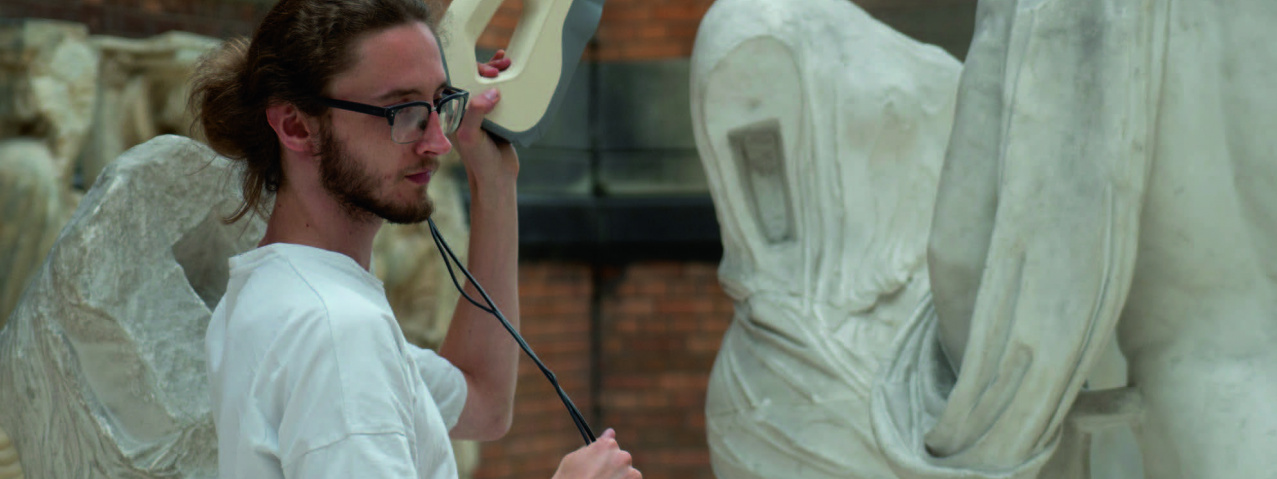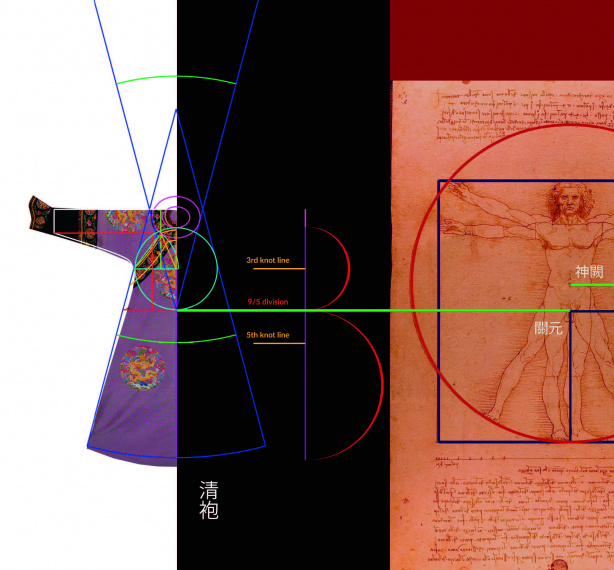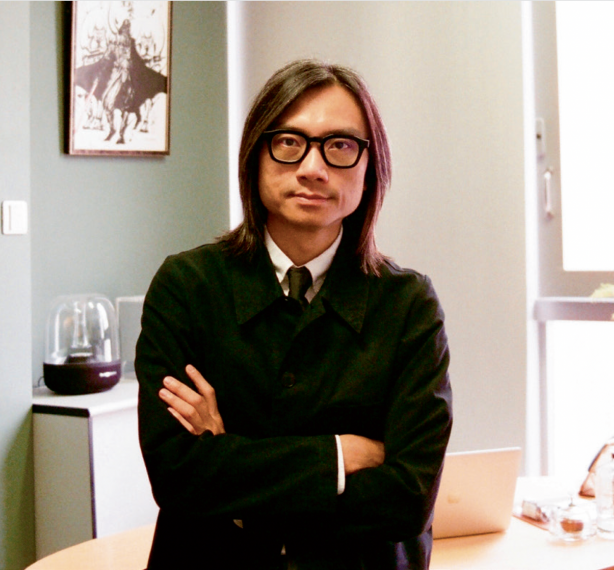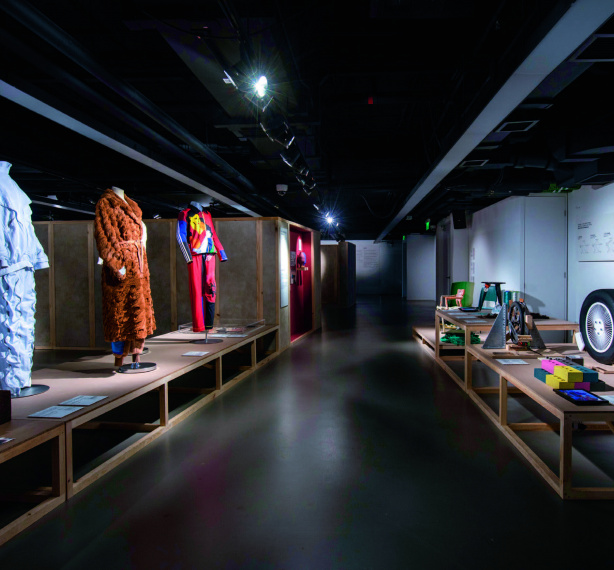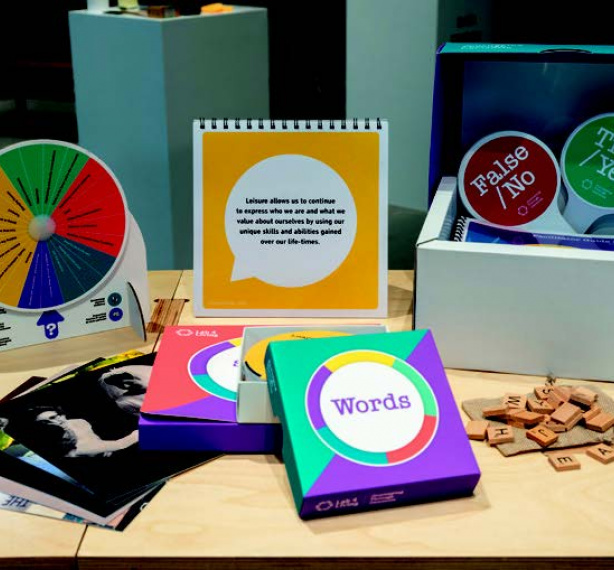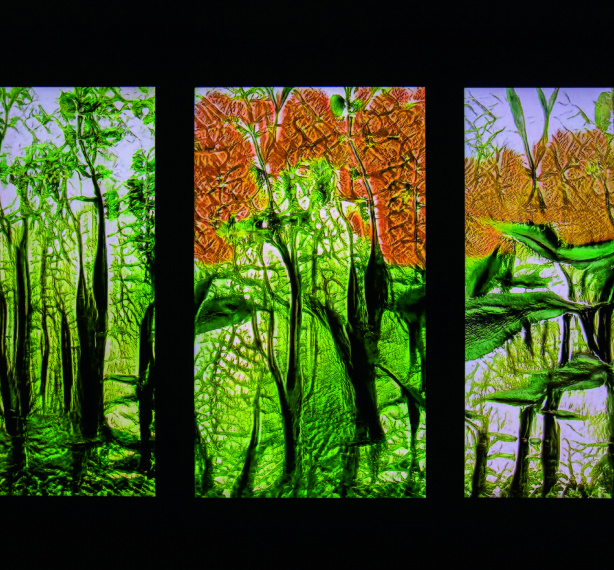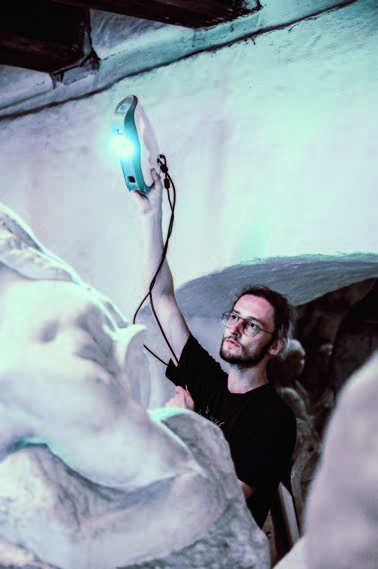
|
Museums are fascinating, but with only a fraction of their items ever exhibited, they could also be considered graveyards for cultural heritage. Museums can, and should, be doing a better job of sharing our incredible global culture. Scan the World's Jon Beck wants to shake up our cultural institutions, and he thinks scanning and 3D printing are the perfect way to revitalise what we consider cultural heritage, and what we can do with it.
While a dimension separates them, a 3D object can also be seen as a photograph. It was a thought that stuck in Jon Beck's mind as an undergraduate art student in photography. After coming across Photogrammetry, a method that stitches together overlapping pictures of an object to create a digital 3D model, he realised the smartphone in his pocket had instantly become a 3D scanner. The next stop was finding something worthy to scan. Living in London, famous for its cultural heritage acquired from around the world, it seemed a natural subject matter. In particular, he was drawn to the British Museum for its enormous collection of antiquities, and conservative attitude toward sharing their collection. Many visits, and thousands of photographs later, Beck decided to present the museum with some 3D-printed models of his scanning work. He was promptly banned from the museum. Undeterred, Beck taught some friends how to scan so they could go to the museum in his place. This was the birth of the Scan the World (STW) project.
Finding collaborators was no obstacle, and soon groups were teaching each other the basics and holding "scanathons" at various museums; often, these groups included experts who would give secret guided tours while the scanning was taking place. Beck explains the appeal: "One of the nice things about the scanning process, especially for 3-dimensional objects, is that you look at it very closely and from less conventional angles, and you look at the object in different ways, all in an effort to get as much information about the object as possible. Scanathons are a way to slow down and really appreciate the work." This proved a seductive element for the art community, and soon they were getting thousands of submissions. Received scans are uploaded to the Scan the World website as 3D printable files, each artefact includes metadata, accreditation, and any available information about the object. Based on open source software, creative commons licensing, and a community of enthusiastic scanners, the archive rapidly expanded, and by 2014, Scan the World (STW) had taken shape.
The final, and defining, element of STW came as a surprise. As contributions mounted, Beck and his small team began to realise that many interconnected stories were being attached to the scanned objects, and these stories were coming from both within and outside the museums, some even related to objects in people's homes. Of course, there were the notes accompanying objects when scanning, and commentary from experts, but more profoundly, there were many stories and observations from amateurs, personal reflections creating connections between people and artefacts. Jon adds, "People also noticed similar attributes between pieces that were geographically distant but had many common elements and shared histories, making it possible to create collaborative stories about a piece of art." Before long, it was apparent that cultural heritage objects in the STW archive were more than just static data defined by expert interpretations. Rather, they were part of a living community, and this community and history are embedded as part of the digital artefact, allowing for a renewed sense of shared knowledge, heritage, and creativity.
Breaking free from permanent storage
What began as one man secretly acquiring content from one of the world's premier stores of global cultural wealth has grown into a movement that highlights important and long-standing issues confronting cultural heritage institutions. Beck elaborates, "The availability of cultural data, and in particular 3D scanning, has opened access to digital artefacts and stands in stark contrast to, and gives a certain freedom from, the heavily curated exhibits and closed archives we see in museums, galleries, and archives. These traditional cultural institutions come with significant barriers. Of course, the vast majority of items are in permanent archives and seldom see the light of day, but access to museums is also impossible for the vast majority of people living distant lives. In addition, people with specific conditions, such as visual impairment, constantly struggle to appreciate art in its fullness. By taking the object out of the museum, and out of its protective casing, as well as adding more information and context to objects, we can democratise cultural heritage on many levels."
Beck had started STW to help break down the walls of the cultural institutions, the gatekeepers of world cultural heritage, and as a way to democratise art. With more than 25,000 scanned artefacts from around the world uploaded as 3D printable files, and an average of 10,000 downloads a day, he is certainly making headway toward this goal. While some people are happy just to have a realistic reproduction of a famous artefact in their home, many others use the material as a canvas to build upon. Experimental printing and modifying of artefacts, or rendering objects into video games and virtual environments, are just some of the possible artistic endeavours. Scans are of sufficient quality to make anything from tiny pieces of jewellery to a gigantic Mardi Gras float. Essentially, anyone can do anything with whatever is there, and they encourage people to let their imaginations take hold.
For Beck, however, there is a deeper meaning behind giving free reign to use STW materials, "Promoting creativity and perpetuating the creative life of an object, and giving people the tools to do this, is a way to actively consume and interact with culture, making it a living thing, extending the creative life of objects, and adding to the story of an object long considered ancient history. In this way, it makes cultural heritage more than just something for rich people and elite institutions to possess. It becomes a living and evolving cultural artefact and experience because it is passing through the hands of artists and creators, helping to create a further story." Moreover, for STW, these stories aren't just about famous statues and relics from antiquity; Beck insists that anything that has cultural meaning, even if only on a small scale, can be scanned and uploaded to the site to become part of the global cultural milieu.
Rights and responsibilities for heritage custodians
Beck is keen to position STW as part of a movement to share global cultures, and is sensitive to the contentious history many museums and cultural institutions in the West have when acquiring items of great cultural significance. To this end, STW is actively partnering with cultural institutions, both to share as much of the shared heritage as possible, and to support people with deep cultural connections in getting access to their cultural heritage locked away in museums. For Beck, it is clear: "Contentious objects and culturally sensitive goods should be copied and displayed in museums, with the originals being returned to where they rightly belong."
To make his point, Beck brings up the example of the Easter Island heads sitting in The British Museum, which forces the Rapa Nui people to travel long distances to pay respects and give offerings to these items of great cultural significance. "To not return the original but only give a digital copy is another form of digital colonialism," asserts Beck. Even when considering whether to scan an artefact, cultural sensitivities must be prioritised. If Beck comes across work that is outside of his UK male experience, he will reach out to relevant communities to ask their thoughts on the artefact being copied. In some cases, it may not be culturally appropriate to put printable versions online. At the risk of being refused permission to scan, he defers to the people who are directly connected with the objects to give their consent and the opportunity to tell their story about the object.
The prospect of helping repatriate cultural artefacts is one upside, but technology development, such as drones and progress in 3D printing, is also expanding the scope and scale of STW activities. For example, it is now possible to use archival footage to recreate objects that are lost due to natural disasters or human causes— which is a step beyond STW users constantly trying to put the arms back on Venus de Milo or print a nose for the Sphinx. International expansion of STW activities is also gathering speed, with programs having been established in numerous countries, including India and China, where groups of people are trying to resuscitate what has been lost over time and to cultural upheaval. STW is always looking for collaborators, and they have some ability to support new groups with 3D printers and training, and help establish scanning experience labs.
Virtual heritage is not the answer
For all its possibilities, Beck has reservations about the current rush to digitise everything, as it may not be necessary, or appropriate, and there are natural limits to be recognised and understood. "Digitising should be done with purpose. We want to help people appreciate cultural heritage as a shared experience, not as an activity mediated by large corporations that have captured huge amounts of data and want to monetise it in virtual worlds." Fearful that a tsunami of virtual cultural production and consumption could fundamentally alter humanity's ability to create cultural identities, Beck would like to see the emergence of a "conscious metaverse," a place for both virtual and physical—what he calls the "MetaReverse." He continues, "A MetaReverse is a liberating universe built on actual connections between people, a place where creativity can be embodied in the physical with 3D printing, and is able to create new stories that can be freely shared. In this way we can perpetuate the cycle of culture creation."
The work of STW is a glimpse into what a possible future for culture creation, preservation and recreation could look like. It is a vision that puts humans, and the act of sharing, at the very centre of cultural heritage. For Beck, this is an entirely natural state of affairs because, "The object is the most important thing, it has its own life and story and is not merely a possession, but rather something that is living and connected. It is how people are connected to it that is most important, and even printing it can mean becoming part of the artefact's story. Time is lost in an archive, and attaching artefacts to stories gives them provenance, connection, and greater meaning than simply who is in possession of an artefact at a specific point in time."
|
